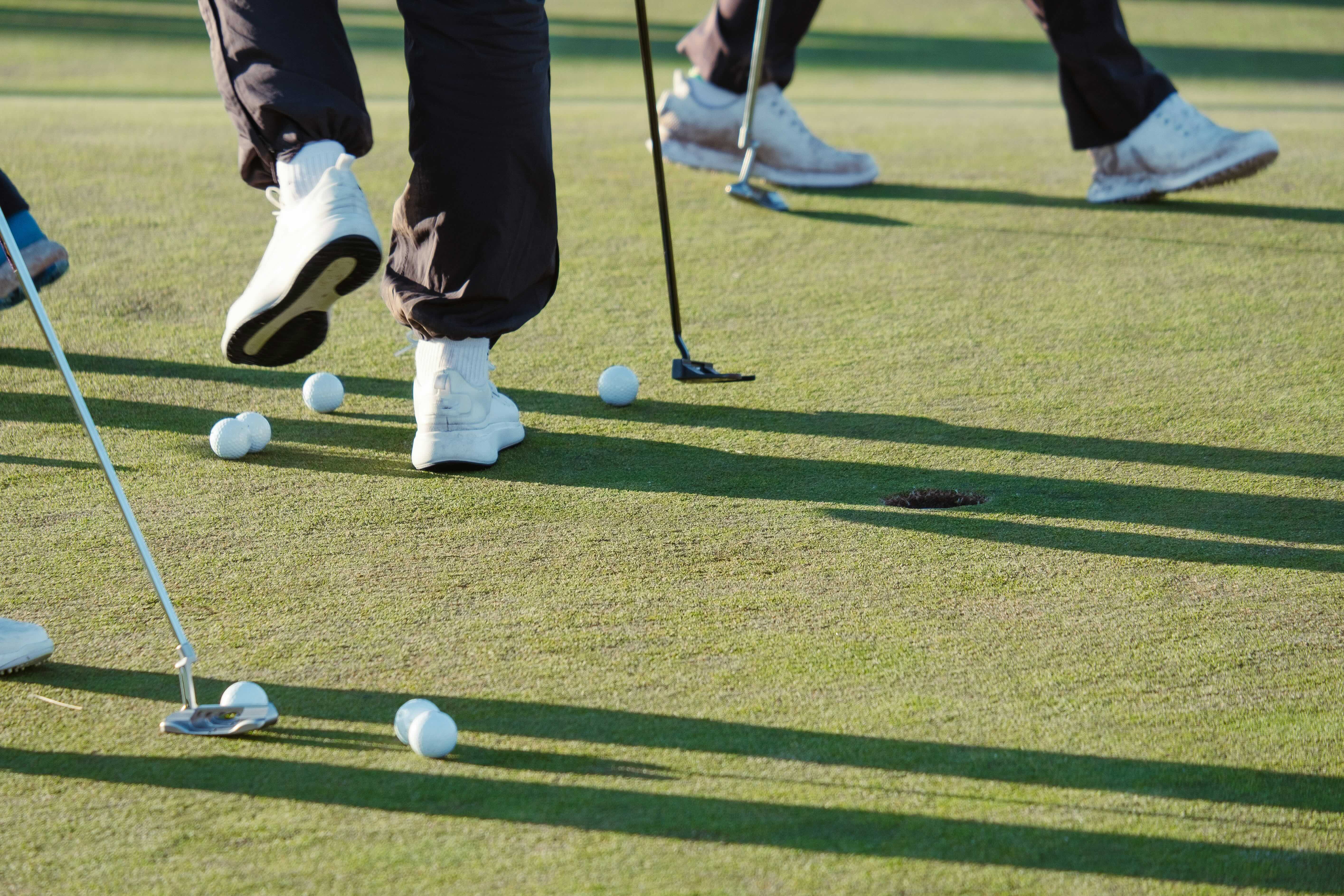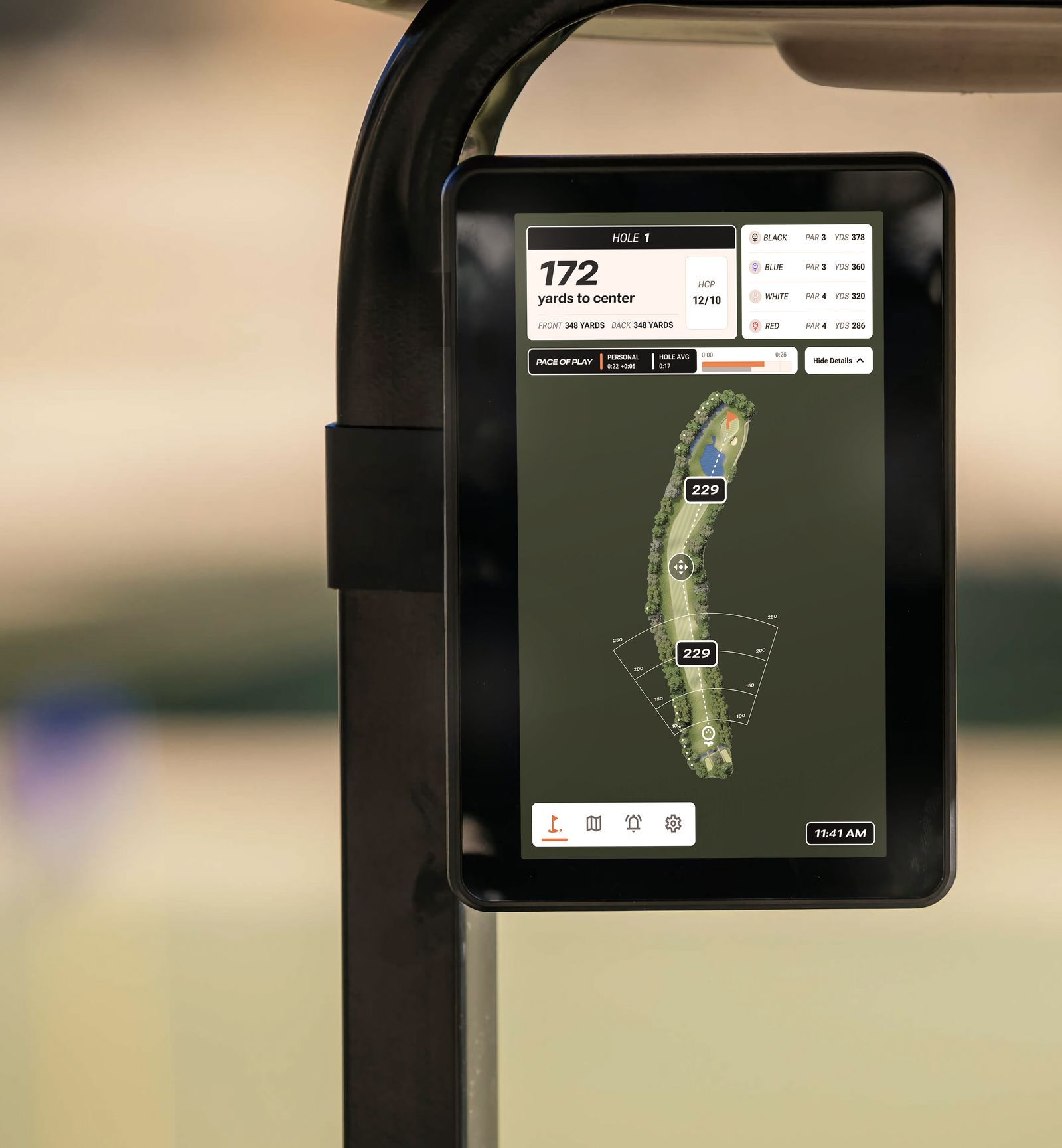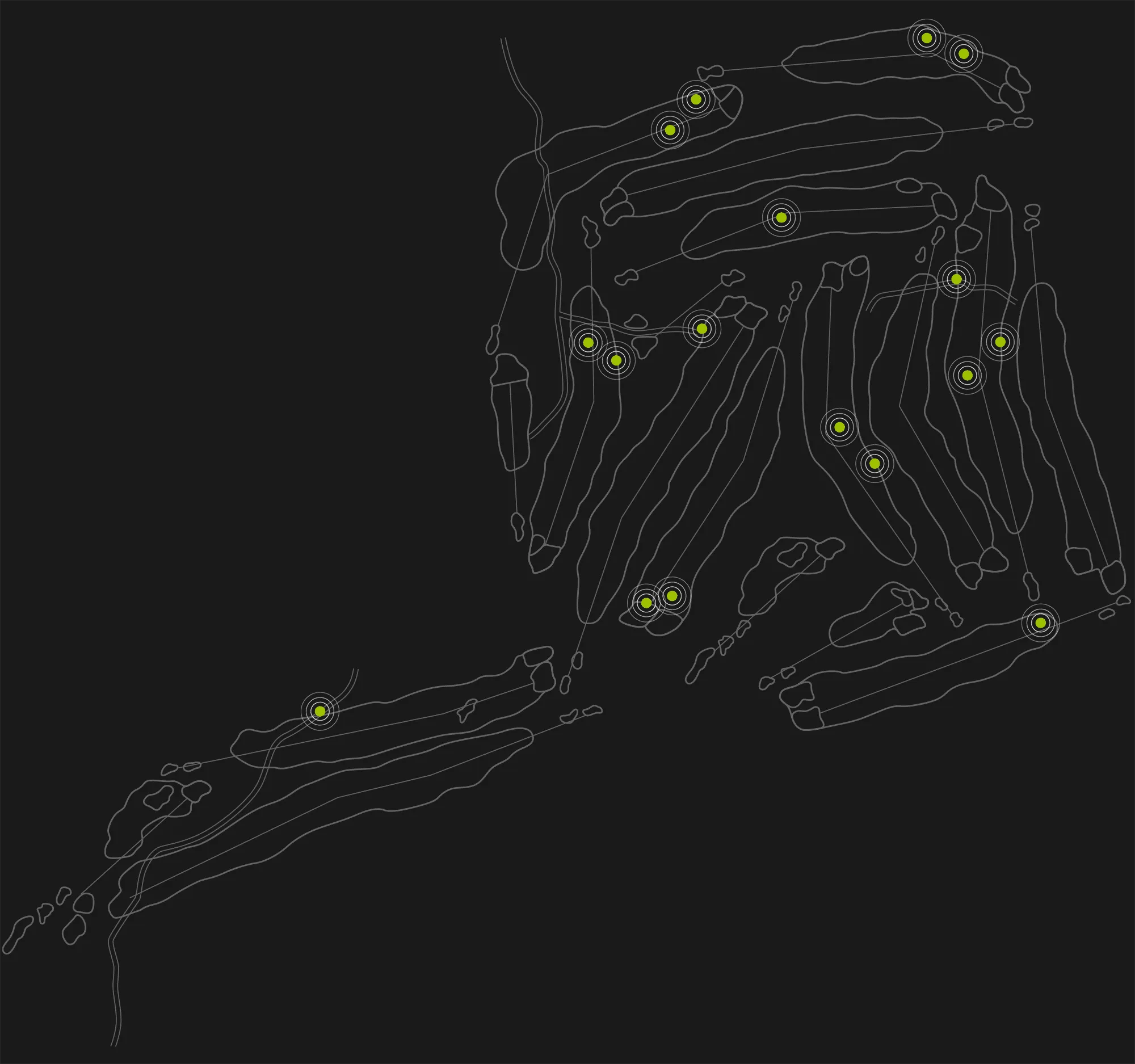Selecting the right golf course turf means understanding your climate, dealing with high-traffic areas, and making maintenance decisions that align with your course’s unique needs.
Whether combating shade or handling the challenges of foot traffic, this article cuts to the chase with insights on choosing and maintaining golf course grasses – without getting lost in the rough.
Key Takeaways
- Climate, temperature, and playing conditions are critical in selecting turf for golf courses, with warm season grasses, such as Bermuda and Zoysia, being ideal for southern regions, and cool season grasses, like bentgrass and fescue thriving in colder climates.
- Synthetic golf greens are gaining popularity for their low maintenance and reduced environmental impact, however, natural grass greens continue to be favored by golfers for the traditional playing experience, despite higher maintenance requirements.
- Effective turf management on golf courses requires strategies that accommodate heavy foot and cart traffic, as well as systems like FAIRWAYiQ to minimize turf damage, combined with the selection of appropriate shade-tolerant and traffic-resistant grass varieties for different course areas.
The Art of Golf Course Turf Selection

An array of factors influence the selection of turf for golf courses, including climate, temperature, and playing conditions. The primary grass types used in golf courses fall into two categories: warm season grasses and cool season grasses. Each type comes with its own set of advantages and challenges.
Warm season grasses, such as Bermuda grass, offer superior disease resistance and durability against foot traffic, making them ideal for certain course locations.
On the other hand, cool season grasses, like bentgrass, are best suited for colder climates and offer an array of options, including fescue, zoysia, and bluegrasses.
While both types have their distinct advantages, combining different turf grass types can pose challenges such as uneven growth, pest issues, and aesthetic disparities. Understanding the specifics of warm and cool season grasses can help paint a clearer picture.
Warm Season Grasses
Due to their superior performance in southern climates, warm season grass, such as those commonly chosen for golf courses across the southern two-thirds of the United States, offers numerous benefits.
Zoysia grass, for instance, is both heat-resistant and capable of tolerating cooler temperatures. Bermuda grass, another popular option, requires supplementary watering to maintain vitality in dry conditions, but its ability to recover quickly from foot traffic makes it an excellent choice for high-traffic areas.
When it comes to mowing heights:
- Bermuda grass should be maintained at a height of 0.375 to 0.500 inches.
- Zenith Zoysia should be mowed at 1 to 2 inches.
- Emerald and Zeon Zoysia should be mowed at 1.5 to 2 inches.
This range of heights provides a variety of playing surfaces on the golf course and ensures optimal turf quality.
Cool Season Grasses
Contrastingly, cool season grasses thrive in colder climates. These cool season grass types include:
- colonial bentgrass
- creeping bentgrass
- Kentucky bluegrass
- fescue
Bentgrass is often used for putting greens, providing a smooth and consistent surface for golfers on a putting green. In particular, it is an excellent choice for colder climates due to its exceptional freezing tolerance and ability to maintain a smooth playing surface even at low mowing heights.
However, not all cool-season grasses are created equal. Kentucky bluegrass, while exhibiting some salt tolerance, is not the best choice for coastal regions with high salt exposure or areas with heavy foot traffic. Fescue, on the other hand, requires minimal maintenance but is better suited for areas with lower foot and cart traffic.
Blending Grass Types
Although warm and cool season grasses each have their unique benefits, the overall health and visual appeal of the course can be enhanced by blending various grass types. Some grass types, such as fescue, are known for their low maintenance requirements, making them an attractive option for course managers.
Blending can also enhance heat and drought tolerance by integrating species that demonstrate exceptional heat tolerance and endurance in high temperatures. Furthermore, blending grass types with good shade tolerance can increase shade tolerance on a golf course, which is particularly beneficial for courses with large tree-covered areas.
For areas that need to withstand heavy traffic, the use of durable and resilient grass varieties such as Bermudagrass can be effective. The commonly blended grass types for golf courses, including:
- Bermuda
- Bentgrass
- Fescue
- Zoysia
- Poa
- Rye
Each possess unique effects and characteristics that contribute to the overall quality and playability of the course.
Synthetic vs. Natural Golf Greens: A Comparison

While natural grass has been the traditional choice for golf greens, synthetic golf greens have grown in popularity due to their low maintenance requirements and similar playability. However, there are some differences to consider, including cost. Here is a breakdown of the costs involved:
- Artificial grass installation ranges between $5 to $20 per square foot
- Professional synthetic putting greens can cost between $15 to $40 per square foot
- Natural grass installation averages between $1 and $2 per square foot
It’s important to weigh the benefits and costs of each option before making a decision.
The lower water and maintenance requirements of synthetic greens reduce their environmental impact, leading to decreased pesticide use and mowing needs. However, for many golfers, the appeal of natural golf greens lies in the traditional playing experience they offer, despite their higher maintenance needs.
Tee Box Turf Essentials

Selecting turf for the tee box is a vital part of managing a golf course. Some turf varieties with high drought tolerance that are suitable for golf tee boxes include:
- Perennial ryegrass
- Ryegrass
- Bermudagrass
- Bermuda
- Buffalograss
- Turf-Type Tall Fescue Blend (specifically the variety Barserati)
These green turf varieties are chosen for their ability to withstand high traffic and drought conditions.
Shade tolerance is another essential factor to consider when selecting turf for golf tee areas, including tee lines. Creeping bentgrass and Zorro Zoysia are two suitable shade-tolerant grass varieties for golf tee areas.
The turf’s capacity to endure and recuperate from the physical strain induced by foot traffic, golf carts, and the impact of a golf ball also influences the selection of turf for golf tee boxes.
Fairway Turf Management: Strategies for Success
Turf management strategies gain importance as players move from the tee box to the fairway in the game of golf. One such strategy involves the use of FAIRWAYiQ’s protect the turf feature, which can save golf courses up to 20% in turf replacement costs by reducing damage from excessive cart traffic.
The FAIRWAYiQ system serves to safeguard the turf from excessive cart traffic, leading to cost savings for golf course owners by minimizing the necessity for replacing damaged turf. This system utilizes beepers installed in carts to notify players upon entering restricted areas. In the event of cart intrusion, the optional beeper emits a persistent loud sound until the cart exits the area.
Moreover, FAIRWAYiQ is beneficial in managing heavy traffic on golf courses. The advanced GPS system assists marshals in identifying pacing issues and monitoring cart activity, which in turn can mitigate damage and ensure the health of the turfgrass. This not only improves the efficiency and profitability of the course but also creates an enjoyable playing experience for golfers.
Shade Tolerant Turf Options

For golf courses with tree-lined fairways or other shaded areas, shade tolerance is an important consideration. Fescue grass, for instance, possesses a deep root system that grants it exceptional drought tolerance and the ability to withstand some shade. However, shade can have a substantial impact on turfgrass, leading to:
- Reduced shoot and root growth
- Decreased shoot density
- Limited tillering
- Darker leaves
- Fewer, narrower, more succulent leaves
- Reduced photosynthesis, growth, and overall quality of the turfgrass
For maintaining premium quality shade-tolerant turf like Fescue on golf courses, 30 to 40 percent sunlight is necessary. Sufficient sunlight plays a crucial role in maintaining the health and quality of the turf.
Heavy Traffic Solutions: Turf That Can Take the Pressure
Areas on a golf course that experience heavy traffic, like tee boxes and cart paths, necessitate the use of grass types resistant to high traffic. Zoysia grass, specifically Zeon Zoysiagrass, exhibits rapid recovery from continuous traffic, and Perennial Ryegrass is recognized for its durability and excellent wear tolerance.
The use of traffic management systems such as FAIRWAYiQ can be beneficial in managing heavy traffic. These systems can:
- Identify pacing issues
- Monitor cart activity
- Mitigate damage to the turfgrass
- Ensure the health of the turfgrass
Turfgrass Management for Golf Course Bunkers
Turfgrass faces a unique set of challenges in bunkers. The sand splash caused by golfer foot traffic and environmental elements can lead to weakened turf and potential issues such as disease, weeds, and pests. Zoysia and broomsedge grass, which are suitable for the bunker environment, are frequently chosen for golf course bunkers.
However, the limited sunlight in bunkers often requires the use of shade-tolerant turfgrass to ensure healthy growth. Effective turfgrass management in bunkers involves:
- Minimizing turf and soil removal from around bunkers
- Preserving turf on bunker faces
- Regularly replenishing bunker sand
- Ensuring proper drainage to prevent water accumulation in bunkers.
Summary
As we’ve explored, the art of golf course turf selection involves a delicate balance of selecting the right grass types for the right locations, considering factors like climate, traffic, shade, and maintenance requirements. Whether you’re choosing between warm and cool season grasses, blending different types, or deciding between synthetic and natural greens, every decision contributes to the quality and playability of the course.
We hope that this guide has provided you with valuable insights into the world of golf course turf management. Whether you’re a seasoned golf course owner or a budding turfgrass enthusiast, may your tees be lush, your fairways smooth, and your greens immaculate.
Frequently Asked Questions
What kind of turf is used in golf?
Bentgrass is the most commonly used turf in golf courses in the United States, known for its fine texture and suitability for putting greens.
What factors should I consider when selecting turf for a golf course?
When selecting turf for a golf course, consider factors such as climate, temperature, playing conditions, and the specific needs of different areas. These factors will help you choose the right turf for optimal golfing conditions.
What are the differences between warm and cool season grasses?
The main differences between warm and cool season grasses lie in their ideal climate conditions and their resilience to foot traffic and diseases. Warm season grasses like Bermuda grass are best for southern climates, while cool season grasses like bentgrass thrive in colder climates.
What are the pros and cons of synthetic vs. natural golf greens?
In conclusion, synthetic golf greens have lower maintenance and environmental impact but higher installation costs, while natural greens provide a traditional playing experience with higher maintenance needs. Consider these factors when making your choice for a golf green.
How can I manage heavy traffic on a golf course?
To manage heavy traffic on a golf course, consider using turfgrass varieties like Zoysia and Perennial Ryegrass with high traffic resistance and implementing a traffic management system like FAIRWAYiQ for effective results.
Related Posts

Why Your Course Needs More Than Just GPS: Our Pace of Play Bible, Summarized

Choosing the Right Golf Cart for your Course: Models Compared

Enhance Your Game: The Top Benefits of a Golf Cart Screen on the Course
Revolutionize Your Golf Operations with FAIRWAYiQ
Unlock the power of data analytics to optimize your golf course management

